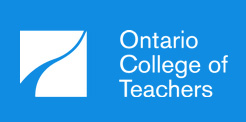How ChatGPT in Education is Evolving
How ChatGPT Is Changing Education
A shift from writing to thinking—and what it means for parents today.
The AI Elephant in the Classroom
Let’s be honest—“Write a 500-word essay” doesn’t mean what it used to. With tools like ChatGPT just a few clicks away, students can now auto-generate a perfectly coherent response in less time than it takes to find a pencil.
And while AI can be a useful learning tool, it’s also reshaping the classroom in ways that have teachers, parents, and students all recalibrating.
Because here’s the thing: when anyone can produce polished writing instantly, what does learning look like now?
Rethinking What “Original Work” Even Means
Every tutor, teacher, and school is suddenly asking a new kind of question: how do we make sure students are actually learning—and not just prompting?
The answer? Educators are getting creative. Here’s how they’re staying ahead:
-
Assignments that can’t be Googled: Think reflections, personal opinions, or tasks grounded in class discussions—anything AI can’t fake.
-
Draft-based grading: Teachers are now valuing the process, not just the final product. Watching a student’s thinking unfold over time? That’s hard to outsource.
-
In-class writing: It’s back. No screens. No second tab. Just pen, paper, and proof that the work is their own.
And yes—some schools are using tools like Turnitin’s AI detector or GPTZero. But even those aren’t perfect. Which is why many teachers are focusing less on catching AI use and more on outsmarting it with smarter assignments.
The Bigger Shift: Less Writing, More Thinking
Here’s a twist: in some classrooms, writing is no longer the main goal. Thinking is.
Instead of asking students to churn out essays, many teachers are now pushing for:
-
Critical analysis of AI content (i.e., “Is this a good answer—and why?”)
-
Collaborative projects where AI can’t replicate real conversation or teamwork
-
Meta-cognitive prompts that ask students to reflect on how they formed their ideas, not just what they wrote
Why? Because while ChatGPT can write—sometimes well—it can’t think deeply, self-reflect, or challenge assumptions. That’s where real learning lives.
The Overreliance Trap
The risk isn’t just plagiarism—it’s passivity.
When students rely too heavily on AI, they skip the struggle. And in skipping the struggle, they miss out on the mental workout that builds real skills: reasoning, clarity, patience, and problem-solving.
Research backs this up—when learners outsource complex tasks to AI without engagement, they don’t absorb the material. They just move on, having learned… nothing.
The goal isn’t to ban the tool. It’s to teach kids how to use it without handing over the wheel.
So, What Does This Mean for Parents?
It means your role just got a little more layered—but also more impactful.
Here’s the reassurance: kids still need guidance. They still need to think, to reflect, to wrestle with ideas—and they need adults to help them do that well.
So talk to your kids. Ask them what they’re learning—not just what they’re submitting. Help them see that while AI might speed up tasks, it can’t replace thought. It can’t build character. And it definitely can’t teach them how to be curious.
Leave a comment :)
Comments will be approved before showing up.
Also in Isyourkidlazy.com

Signs Your Child Is Over-Relying on ChatGPT for Learning
Worried your child is relying too much on ChatGPT? Learn key signs of AI overuse in learning, how it impacts real skill development, and what parents can do to guide smarter tech habits.



Rachel Esco
Author